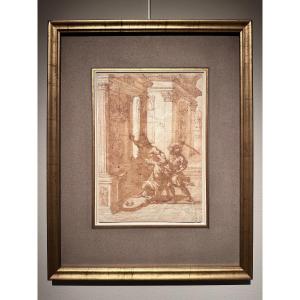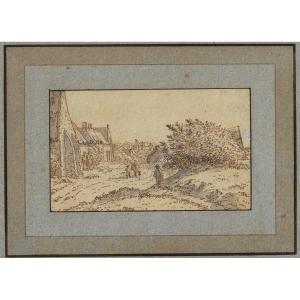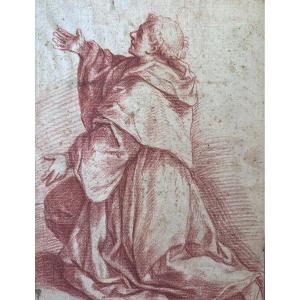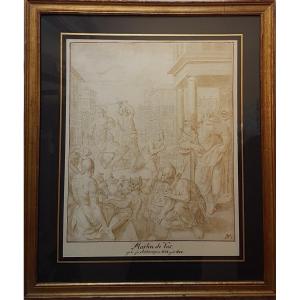Head of a Man and Écorché Studies of Arms
Red chalk on laid paper,
21 x 11 cm
Provenance:
Collection of Michael Jaffé CBE (1923–1997), English art historian and Director of the Fitzwilliam Museum, Cambridge
Private collection, France
This drawing, attributed to the Italian School of the late 16th century, demonstrates the influence of Michelangelo’s approach to anatomy and expression. The sheet combines two distinct studies: an anatomical rendering of arms in the écorché technique, focusing on the musculature and skeletal details, and a head of a man, drawn with careful attention to light and shadow. The use of red chalk lends the work warmth and immediacy, qualities often associated with Renaissance studies of the human form.
The écorché studies reflect the Renaissance fascination with anatomy as both an artistic and scientific pursuit. The detailed depiction of the musculature suggests the artist’s interest in understanding the mechanics of the body, a practice heavily influenced by Michelangelo’s drawings and his sculptural approach to the human figure. The expressive head study, with its intense gaze and finely rendered features, evokes a sensitivity to human emotion, echoing the psychological depth often seen in Michelangelo’s work.
While the purpose of this sheet remains uncertain, it is likely a preparatory study or an academic exercise, typical of the time. Its inclusion in the collection of Michael Jaffé, a respected art historian, underscores its value as a piece of Renaissance draftsmanship and its appeal to scholars of the period.
This work offers a glimpse into the intellectual and artistic priorities of the late Renaissance, where art and science converged in the study of the human body. Though modest in scale, it captures the spirit of inquiry and observation that defines this pivotal moment in art history.




































 Le Magazine de PROANTIC
Le Magazine de PROANTIC TRÉSORS Magazine
TRÉSORS Magazine Rivista Artiquariato
Rivista Artiquariato